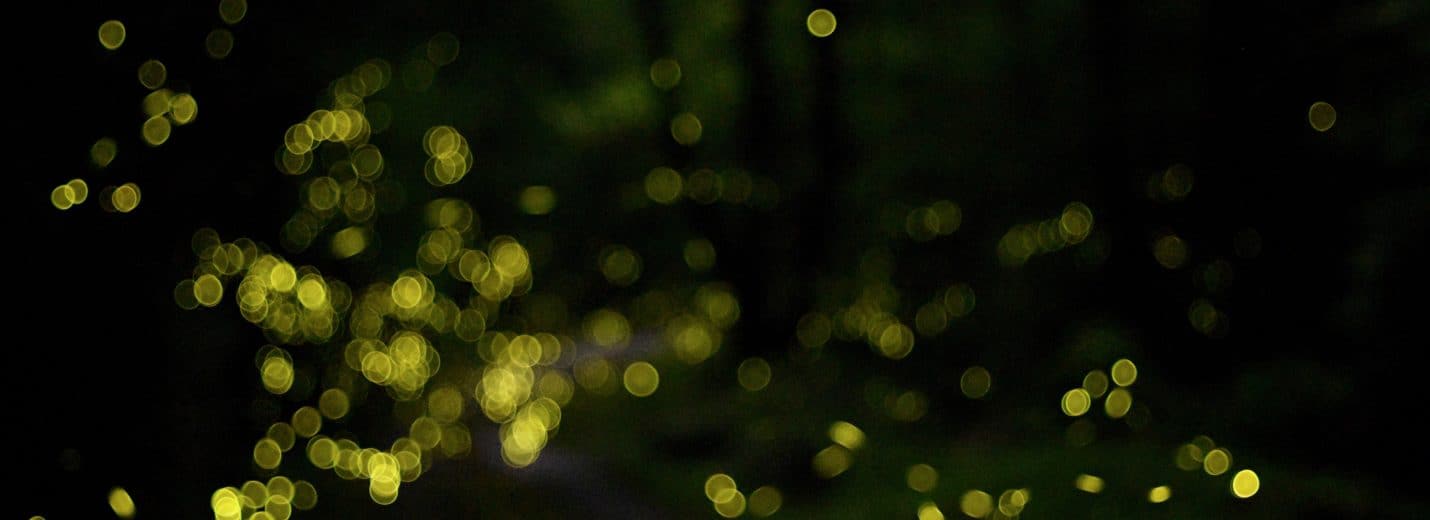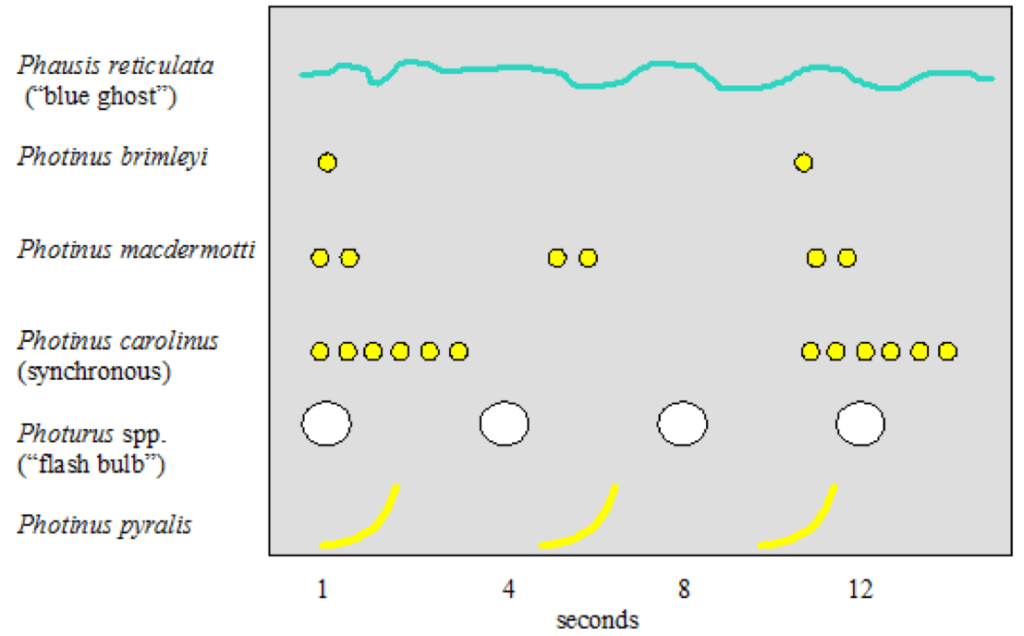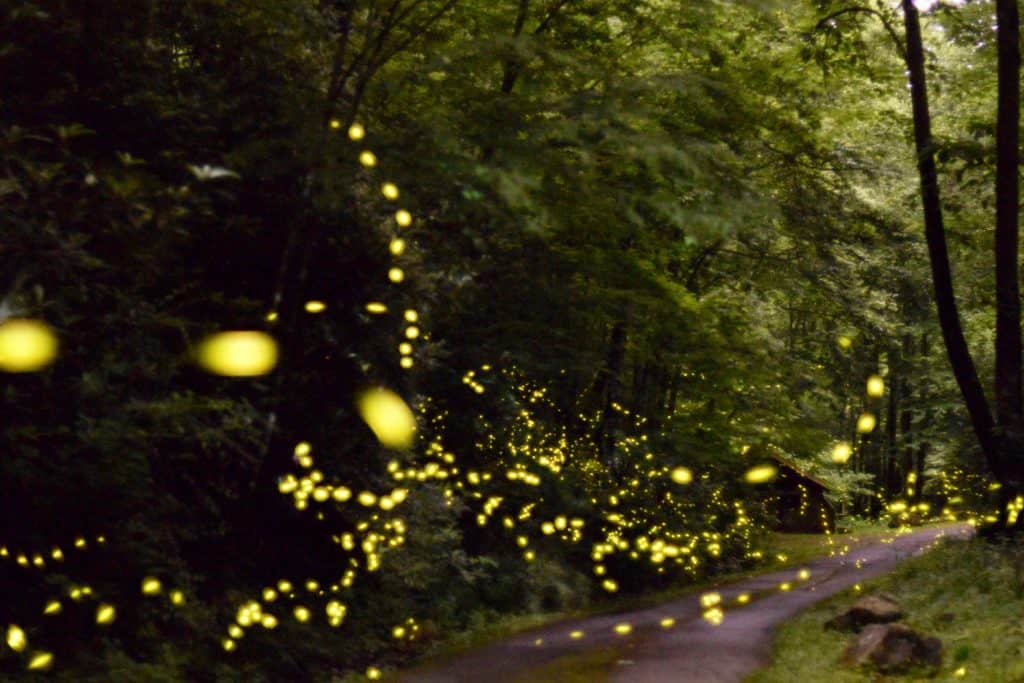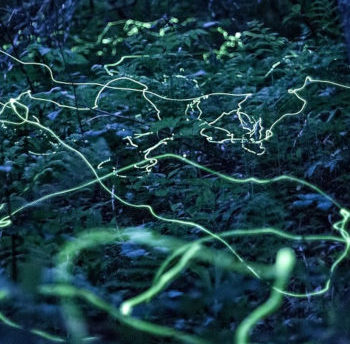
For about 3 weeks in June, swarms of Photinus carolinus mask the forests in the Smoky Mountains with a soft yellow haze. Fireflies from all around gather at an elevation of about 2,100 feet and perform for not only each other, but the entire park. Fireflies are not flies at all. They’re beetles that belong to the Lampyridae family that have adapted wings with a special covering on their abdomen. Like most beetles, they have these specially sheathed wings that allow them to fly. You may know fireflies to be small insects that come out right at dusk and stay until the early night giving off soft glows at arbitrary levels of the forest. You many not know it, but as every minute passes different species of fireflies may be coming and going right in from of you eyes, passing the baton to carry light show. Many fireflies are strictly crepuscular meaning they come out at dusk or dawn and return to their hiding places once the nocturnal predators come out to feed. Others come out once the sunlight is completely gone and flash on into the night.
The science of bioluminescence has always fascinated the eyes of both scientists and the general public for many years. Within fireflies, a common motif of reactions occurs producing the steady glow that hits our eyes. Within the lower “tail” region of bioluminescent species, cells known as photocytes house essentially a long chain of reduction and oxidation reactions that ultimately produce light. An enzyme characterized as luciferase catalyzes the reaction and require key substrates luciferin, oxygen, and adenosine triphosphate (ATP). Other elements such as magnesium are required to stabilize the reaction, however these three are the most essential aspects that can ultimately determine color and strength of the light produced. The actual structure of the luciferase enzyme determines the color of the light. Most flies exhibit a strong green light (~560nm) and have very similar luciferase structure, however the firefly known as the Blue Ghost (Phausis reticulata) gives off a continuous blue glow for about 20-40 seconds capturing the attention of any close observer and has a an altered luciferase structure at a single amino acid (citation). Regarding simple morphology, it can be as easy as using a color or flash pattering to determine what species of firefly you’re seeing. Shown below is a photo of common firefly flash patterns and their correlating species.

While there are over 2,000 different species of fireflies, there are only 2 characterized species that exhibit the behavior of synchronizing their displays of light. These two are Pteroptyx tener in Southeast Asia and Photinus carolinus in southeast North America. The primary reason for synchronous flashing is for mating purposes. Female fireflies require a large amount of visual stimuli in order to mate, so several flies must be active at once. The synchronous part comes after the 8-10 seconds of darkness once all of the blinking stops. Using their large eyes, fireflies are able to perfectly time and synchronize their 5-8 flashes with one another. A long exposure photograph further explains how these wonderful creatures visually “talk” to one another.
If I had to use one word to describe my first few days with DLIA it would be: overwhelming. About 30 minutes after I arrived, checked in, and drove up to where I would be staying, I was thrown into action and on my way to the Worsham family residence which is about 30 minutes outside of Gatlinburg, TN. This property where the fundraiser was held can easily be described as the greatest 5000 acres of firefly viewing forest. We were humbly assigned one of the 8 properties owned by The Worsham family which can only be described as the a cliché cabin in with an expensive array of art and class. You were greeted by a hot tub for two as soon as you walked in through the door. If you had a chance to peel your eyes away from the birch bark covered walls, you’d notice the comically large boulder covered in sheep’s hide next to what I can only guess was an equally large mahogany coffee table. I knew I was in for a treat.
Across Friday, Saturday, and Sunday night we had about 120 guests come to experience the synchronous fireflies in all of their glory. The other biology intern, Rudi, and I were instructed to set up chairs about a half mile down the long snaking road from the property because the house was to high up for the fireflies to get to. They’re behavior is altitude sensitive and requires a Goldilocks elevation of about 2,100 When we arrived back at the house, Dr. Will Kuhn was setting up his presentation that would be given right after dinner. Dr. Kuhn is an entomologist working as a post-doc in the computational mathematics department at UT. His presentation covered everything on the who, what, when, and why on fireflies and the specifics of P. carolinus behavior. The star of the show of course were the synchronous fireflies that, as the name suggests, blink at the same time. The key to their synchronization is the time that they are not luminescent. P. carolinus blinks can be characterized by seven to nine quick flashes followed by about eight seconds of complete darkness. When there’s zero light pollution and you’re under a deeply vegetated canopy, eight seconds in the pitch black can be dramatically long. For about two and a half hours, the small beetles continuously blink in song until quietly dispersing right around midnight. The spectacle is a must see and occurs every single year in the Smokey Mountains. Just make sure that you’re within their elevation range and don’t be afraid to sit in the dark for a while.
Out of the three nights if the event, the first will go down as one of the most exciting experiences of my life. Only about twenty people attended that Friday which left plenty of room for photographs as I showed above. If you’re as curious, I’ve included a few of my favorites below.

My favorite aspect of this event was the wonderful stream of events that led up to firefly viewing. A dinner along with some science is the best way to spend an evening. Learning about fireflies, conservation, and the work that Discover Life in America does can open the mind to a ton of questions. Hopefully now you’re able to say a little bit more when someone brings up the wonderful world of fireflies.


